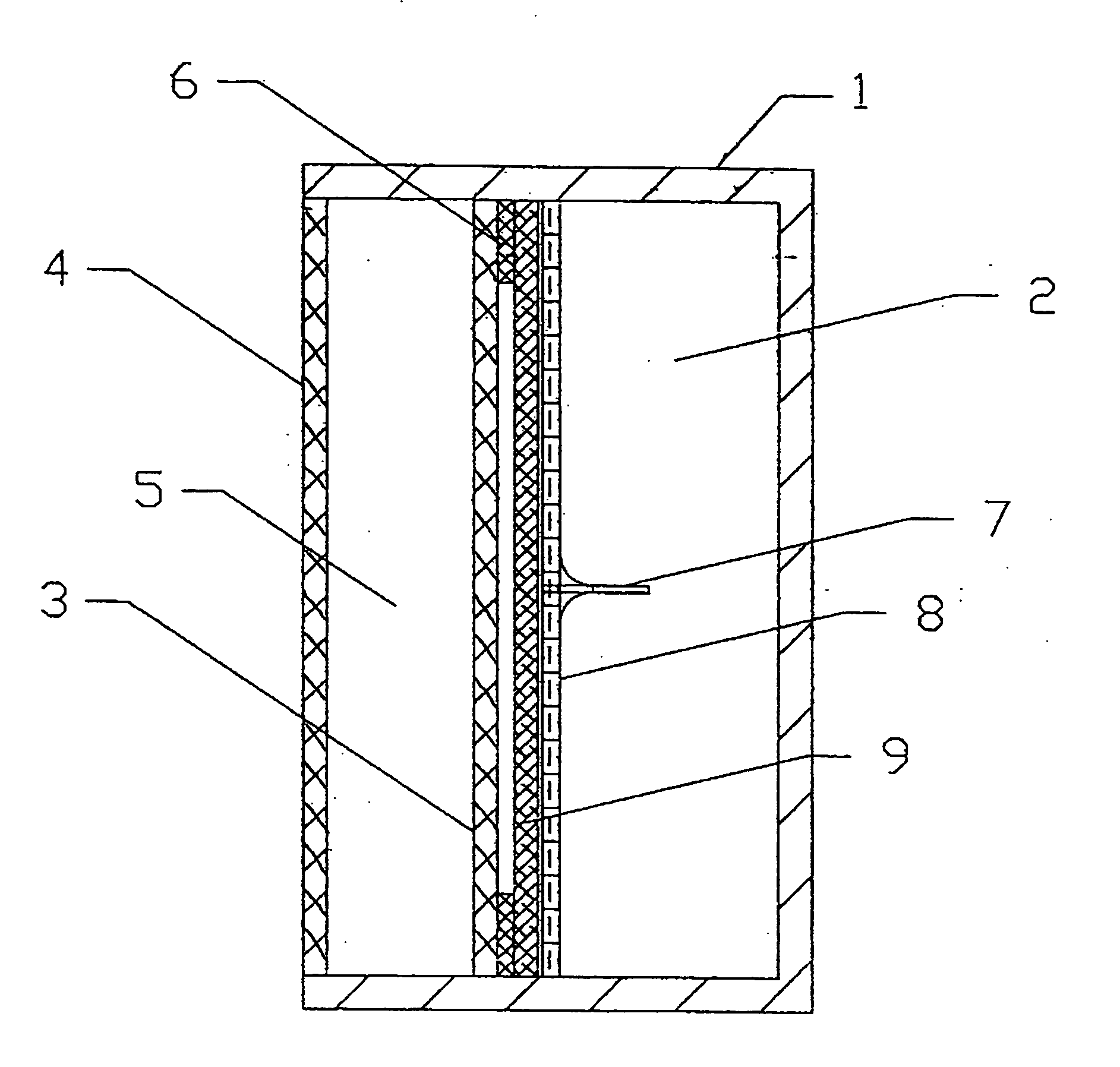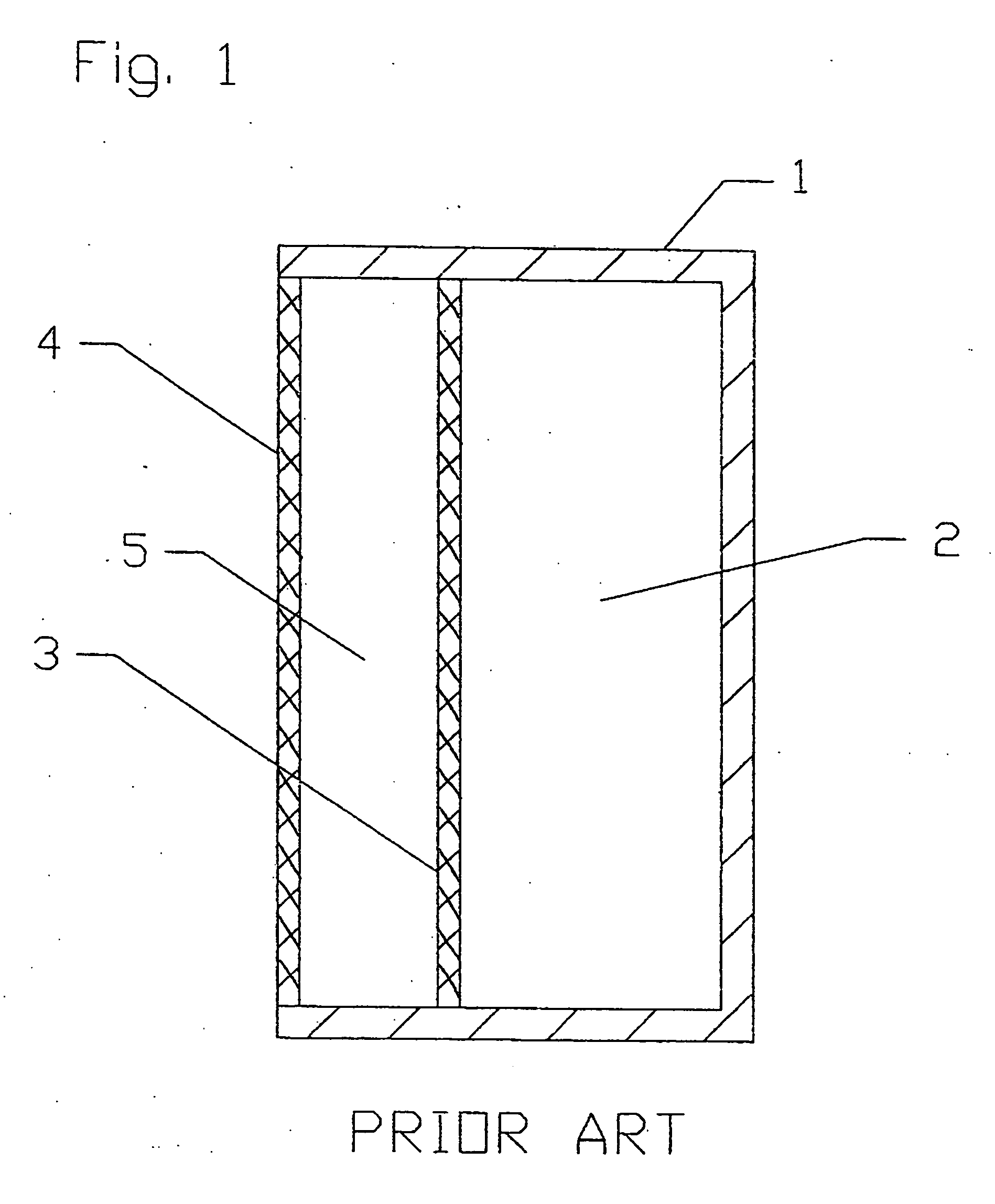Direct liquid fuel cell and method of peventing fuel decomposition in a direct liquid fuel cell
a liquid fuel cell and direct technology, applied in the direction of fuel cells, portable application adaption, sustainable buildings, etc., can solve the problems of methanol toxicity, poor discharge characteristics at room temperature, energy loss, etc., and achieve the effect of reducing or substantially preventing the decomposition of fuel
- Summary
- Abstract
- Description
- Claims
- Application Information
AI Technical Summary
Benefits of technology
Problems solved by technology
Method used
Image
Examples
example 1
[0085] A conventional DLFC of the type shown in FIG. 1 with the following parameters was employed for testing:
Area of anode and cathode=each 45 cm2 (62 mm×73 mm); [0086] Thickness or width of electrolyte chamber=4 mm; [0087] Volume of electrolyte in the electrolyte chamber=18 cm3; [0088] Thickness or width of fuel chamber=20 mm; and [0089] Volume of fuel in the fuel chamber=90 cm3.
[0090] The DLFC was filled with a borohydride fuel and tested under the following conditions: [0091] Full time of test=20 hours; [0092] Unloading regime=open circuit.
[0093] In this test, the maximum gas productivity was 15 cm3 / min. As can be seen from FIG. 4, the generation of hydrogen begins to decrease after about 60 minutes, but continues over the full 20 hours of the test.
example 2
[0094] A DLFC according to the present invention of the type shown in FIG. 2 with the following parameters was employed for testing:
Area of anode and cathode=each 45 cm2 (62 mm'73 mm); [0095] Thickness or width of electrolyte chamber=4 mm; [0096] Volume of electrolyte in the electrolyte chamber=18 cm3; [0097] Thickness or width of fuel chamber=20 mm; [0098] Volume of fuel in the fuel chamber=90 cm3; [0099] Thin film Teflon frame-seal thickness=50 μm; [0100] Stainless steel capillary needle length=7 mm, Inside Diameter=320 μm; [0101] Stainless steel micromesh special membrane with cells=53 μm; and [0102] Polypropylene wattled net spacer material with cells of 2 mm×3 mm and with a thickness=1 mm.
[0103] The DLFC was filled with a borohydride fuel and tested under the following conditions: [0104] Full time of test=20 hours; [0105] Unloading regime=open circuit.
[0106] In this test, the time until the space between the anode 3 and the special membrane 8 was filled was 45 seconds. As ca...
PUM
| Property | Measurement | Unit |
|---|---|---|
| size | aaaaa | aaaaa |
| size | aaaaa | aaaaa |
| thickness | aaaaa | aaaaa |
Abstract
Description
Claims
Application Information
 Login to View More
Login to View More - R&D
- Intellectual Property
- Life Sciences
- Materials
- Tech Scout
- Unparalleled Data Quality
- Higher Quality Content
- 60% Fewer Hallucinations
Browse by: Latest US Patents, China's latest patents, Technical Efficacy Thesaurus, Application Domain, Technology Topic, Popular Technical Reports.
© 2025 PatSnap. All rights reserved.Legal|Privacy policy|Modern Slavery Act Transparency Statement|Sitemap|About US| Contact US: help@patsnap.com



